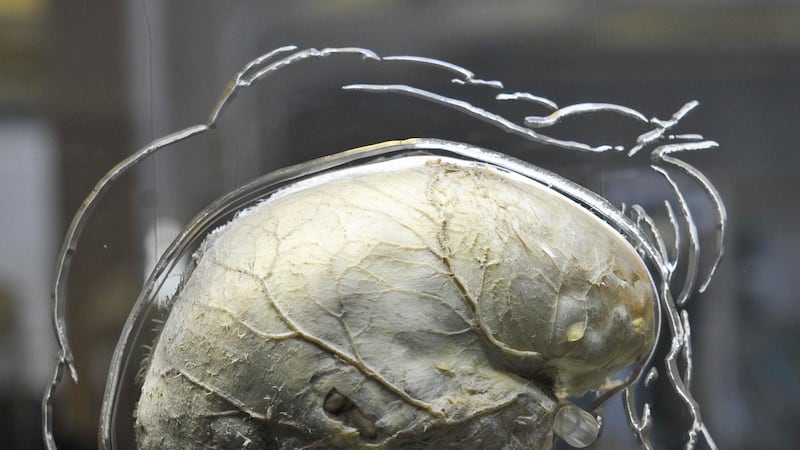Scientists have discovered four sub-groups of one of the most common brain tumours and proposed a potential new treatment option to tackle the most aggressive type.
Experts said that the finding was “transformative” in the understanding of meningiomas and opens up potential new tailored treatments.
The new identification could help inform patients and their doctors about how their cancer are likely to “behave” and means that some patients could be offered treatments sooner rather than the standard “watch and wait” approach.
Around 12,000 people are diagnosed with a brain tumour each year in the UK, and around a fifth of these are meningiomas.
Meningiomas are tumours that start in the set of membranes inside the skull that cover and protect the brain and spinal cord. Most are slow growing, but some can be faster.
Many patients are put on “active monitoring” – where medics keep a close eye on the tumour growth and offer surgery and radiotherapy at a later date if needed.
The new study, published in the journal Nature, details four distinct groups of meningioma after scientists conducted detailed biological analysis of the tumours from 121 patients as well as information from several datasets.
Researchers at the University Health Network in Toronto said that classification by these molecular groups more accurately predicted clinical behaviour and time to recurrence than the standard classification systems currently used.
Patients with two of the sub-types were found to have their disease return sooner than patients with other types of tumours.
And patients with one molecular type of meningioma were found to have the worst outcomes.
Scientists said that each molecular group also showed distinctive biology and characteristics that could be used to help identify more tailored treatment options for patients.
They also looked to see if any drugs approved for use in the US could target any of the specific biological drivers identified in the different molecular groups.
They found that a drug used to treat lymphoma – called vorinostat – targeted several critical mechanisms involved in the growth of the most aggressive group of meningiomas.
Preliminary studies in mice found that vorinostat could slow growth of this sub group of meningioma tumours and improve survival.
Experts have called for clinical trials to confirm whether it may represent the first-ever effective drug treatment for meningiomas.
“This is a transformation in our understanding of meningiomas,” said the study’s lead author, Dr Farshad Nassiri, neurosurgery resident at the University of Toronto.
“The classification that we’ve discovered gives new insight into the biology of the full spectrum of meningiomas, specifically why some of these tumours behave more aggressively than others.
“Our findings now give us the first real look at more tailored treatment options to add to surgery and radiotherapy.
“We also discovered that the most aggressive group of meningiomas could be targeted using a drug that is already FDA-approved for other cancers. For many years, patients have often needed to have multiple rounds of surgery and radiation, fortunately with very limited lasting effects. But the better understanding of the biology of the disease has now allowed us to discover the option of a medical treatment that could change the landscape for our patients.”
Commenting on the study, Dr David Jenkinson, interim chief executive at The Brain Tumour Charity, which helped to fund the study, said: “These are extremely exciting findings that we hope will now lead to a step change in the diagnosis and treatment of meningiomas both in the UK and globally.
“This new classification of four molecular groups of meningiomas could now enable patients to be given a more accurate prediction of how their tumour may behave and help identify those in need of more aggressive treatment sooner, rather than taking a ‘watch and wait’ approach.
“It’s really promising that an existing lymphoma drug has been found to target the biological drivers of the most aggressive meningiomas and could represent the first-ever drug treatment for the disease.
“We hope this can be swiftly advanced to clinical trials to fully assess its potential to be repurposed as a meningioma treatment and to understand whether it could help extend or improve patients’ lives.”







